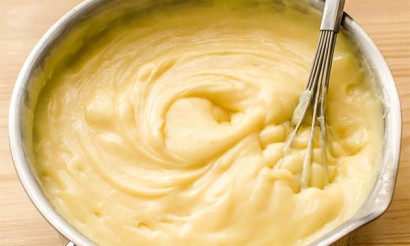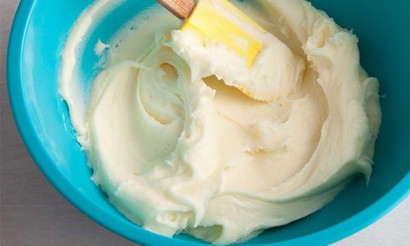How much yeast dough is stored in the refrigerator
Rarely does any hostess manage to make just enough yeast dough to bake the right amount of delicious and flavorful items. To make sure there is enough dough, many people prefer to increase the amount of ingredients - in the end, there is a surplus left over. No one has the heart to throw away this goodness, especially since bread (yeast dough can be counted as such), according to tradition, should not be treated in this way. Then the question arises about how to save it so that you can bake something tasty later, when fresh baked goods run out, or the hostess comes up with new ideas.
Everyone knows that yeast dough can become sour if it is not used in time, and then nothing but sour cakes will come out of it. First of all, almost everyone will think of the refrigerator, because it allows us to keep many products fresh for a long time. But the dough is not so simple.
The fermentation process in cold air slows down considerably, but it doesn't stop, so you can't keep it there for long. A freezer can help, but this storage method also has a time limit. In the freezer, there is a low probability that the product will spoil, but after a certain time, it will definitely lose most of its properties. So, in order to know exactly which storage method to choose, you need to become more familiar with both the product itself and the options for preserving it until the next time you want to concoct something.
What is yeast dough
Already from the name you can understand that dough that includes yeast is called yeast dough. It differs from other types of lushness, elasticity. Products made of it are airy and soft. Yeast dough is the basis for cooking a variety of products and dishes - from simple bread to rolls, muffins, cakes. Even a proper pizza base is made from this type of dough.
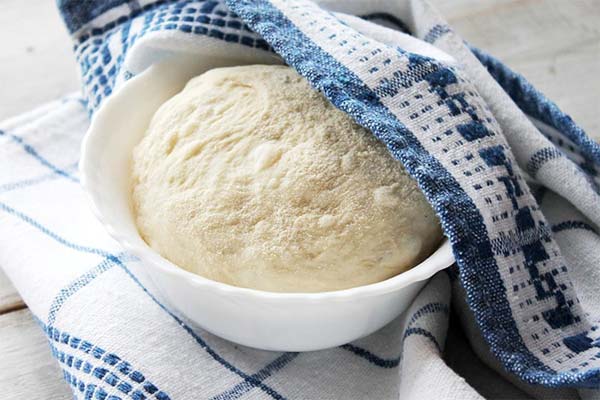
It is also called sour, because the fermentation process takes place while it is growing, which triggers the vital activity of yeast in a sweet environment. The fact is that the flour contains enough carbohydrates to become the basis for the nutrition of this kind of unicellular fungi when it interacts with water. In the process of life, carbon dioxide is formed, which lifts, loosens and softens the dough. During frying and baking, high temperatures cause the gas to rise faster and release more, which is what makes yeast dough so soft and fluffy.
There are different types of yeast dough. There are two main ones:
- Bread dough. It is used to make bread and bakery products.
- Pastry. It is used to make buns, cakes, muffins and pies.
Bread dough usually consists only of water, yeast, and flour. A little salt is also added to make it taste good. Sometimes some cooks and housewives add a little sugar to the bread dough. This makes the taste more interesting, and the yeast fermentation process goes a little faster.
In muffin dough, in addition to the already listed ingredients, there must be some kind of muffin. These are eggs, milk, cream, sugar, sour cream, butter. To get a good muffin dough is much more difficult, it requires certain skills and experience. The reason is that muffins slow down the fermentation process. As a result, the dough may simply not rise. To prepare any kind of yeast dough, you need to clearly follow the recipe, proportions and production technology, and muffin dough - even more so.
To get a good result, it is necessary to understand that with the addition of muffin you should increase the amount of yeast. The correct temperature of the air and ingredients also plays an important role. Cold foods greatly slow down the yeast's vital activity. And high temperature stops it completely. The recommended temperature is 25-30 degrees. Also, after kneading the dough stand in a warm place.
How to make yeast dough
There are two main ways to make yeast dough: leavened and unleavened. The sheep dough method is more time-consuming and complicated. First, a liquid dough is made in which either all the ingredients or some of the ingredients and yeast are used. Half as much flour is used. Once the omelet has proofed sufficiently and risen well, the rest of the ingredients and flour are poured into it. Knead the dough well and leave it to ferment. In the unsteamed method, all products are immediately mixed in one container, then also give it time to rise well.
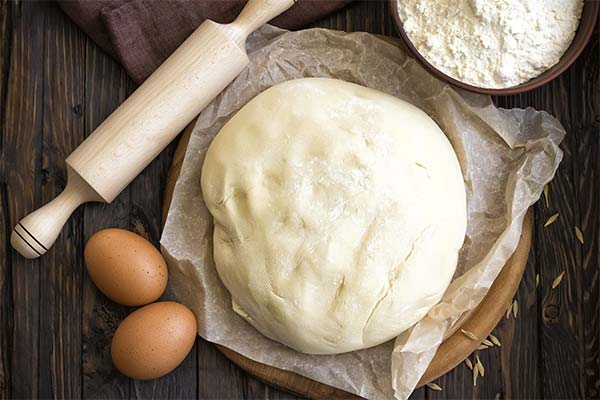
Usually the sourdough method is used when a lot of muffins are included. The okra helps the yeast to become fully activated in the liquid muffin, and then the flour is added to bring it to the desired consistency. The leavening process is very slow for the yeast. Such a dough is very difficult to rise, the use of sourdough can help avoid these problems.
The no-steam method is needed when you need to put an ordinary yeast dough, where either there is no flavoring at all, or it is used very little, for example, vegetable oil, milk.
It is very important not to forget about the temperature regime. This applies to the room and the products. Therefore, the eggs are taken out of the refrigerator in advance, so that they warm up to room temperature. Liquid components are heated slightly on the stove or in the microwave. The main thing is not to overheat, otherwise the yeast will die. The recommended temperature is no more than 38 degrees. To the touch, the ingredients will be pleasantly warm. It is worth preparing flour in advance, if it is stored in a cool room.
Experts also advise letting the yeast rise separately first. In this way, the dough will rise faster and it will be more puffy. To do this, pour them into a container, add a little sugar, pour warm liquid, milk or water, depending on the recipe. When a thick foamy cap forms on top, they can be combined with the rest of the ingredients. The amount of yeast should be calculated based on the recipe and the manufacturer's recommendations on the package.
Dough on sourdough
For the sourdough method, warm milk or water, other ingredients mix with the rising yeast, stir. Pour some of the flour into the mixture, usually half of the required amount according to the recipe. Some chefs advise to add less flour, and to add more as the sourdough heats up. Then leave the sourdough in a warm place for 45-60 minutes. Usually it increases 1.5-2 times. Fully evaporated leaven begins to sink. Then you need to add the rest of the pastry, flour and salt. Salt is always added last. It also slows down the life process of the organisms. But without it there will be absolutely no flavor. The dough should be well kneaded until smooth. It should stop sticking to the hands and fall off the walls of the container. Flour is no longer added. After the dough has stood for 1.5-2 hours. Then the process of crumbling takes place. This allows the excess carbon dioxide to escape and the dough to be enriched with oxygen. Products can be shaped. After shaping products should stand well.
Dough without sourdough
In the unleavened dough method, the liquid ingredients must also first be heated, then the yeast, salt and flour are added. The dough is kneaded again until it is smooth. After that it is left in a warm place for 1.5-2 hours. When using the unbleached method, the dough must rise twice before forming the products. Therefore it is kneaded and left for another time, so that it rises a second time.
Important! The dough should not be allowed to over-ferment. It gets an unpleasant sour taste, begins to smell strongly of yeast, and the products are of poor quality.
Large industries add leavening agent to yeast dough. This helps baked goods hold their shape better and retain their freshness longer.
How long can yeast dough be kept in the refrigerator?
If there is dough left over after making products, it must be put away immediately for storage. It should not be allowed to rise. The fermentation process in the refrigerator does not stop, but only slows down a little, so the risen dough will overstay and begin to sour. The product will be spoiled. It can only be used to make scones or patties and deep-fry them in a pan. Storage time in the refrigerator and freezer is much different. In the refrigerator, it is better to store the product if you plan to cook something with it within a day, and in the freezer you can put the dough when you do not plan to cook anything in the near future.
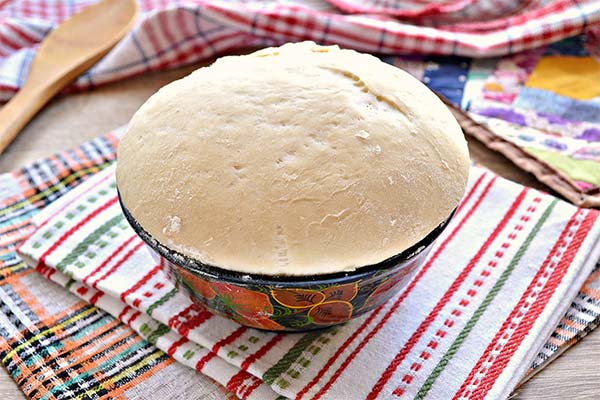
In the freezer
So, in the refrigerator, the dough will be stored for no more than a day. If the model allows you to lower the temperature to 1-2 degrees, then the product can last two days.
First, it is not recommended to store a large volume of dough, because it will not have time to cool completely, the fermentation process will go almost at the same speed as in the room. Then it is better to divide it into small portions, put it in different bags or containers. If you plan to use not all of the dough, it is better to put a small part in the refrigerator, the rest to freeze.
Secondly, the dough should be taken to the refrigerator immediately after shaping the products. Already risen product will continue to ferment and in a few hours will begin to fall off. Such a dough will not rise anymore, in addition, it will spoil the taste.
You can store the dough in the refrigerator in a thick bag, container, bowl. Beforehand, it is better to grease its surface with oil. In a bag, leave space for the dough to grow, and tie it tightly. If you do not leave space, the dough can tear the bag and climb out onto the refrigerator shelf. You can also put it in a bowl, then the top of the container should be covered with food film, in which to make small holes. Also, do not forget to leave room for growth.
When the time comes, the dough should be taken out, transferred to a container and left in the room to warm up and then rise.
In the freezer.
In the freezer, yeast dough can be stored for 3 months without losing its properties. Then it just loses flavor. When frozen, the fermentation process also does not stop, but it slows down a lot. The dough will not rise, but an unpleasant taste may appear if stored for a long time. If the product is stored in large quantities, the time increases significantly. But it is worth bearing in mind that thawed dough cannot be re-frozen. Therefore, if you do not plan to use the whole product at once, it is worth to divide it into small portions, roll it into a ball, oil the surface, put it in a bag or container and send it for storage in the freezer. Then take it out as needed.
The freezing option has advantages other than long term storage. Freezing practically does not change the taste, some housewives claim that the dough after defrosting becomes better, more elastic, tastier.
But there is a big disadvantage. You can not take it out of the freezer and immediately start cooking. A step-by-step defrosting process is necessary.
Rules for defrosting yeast dough
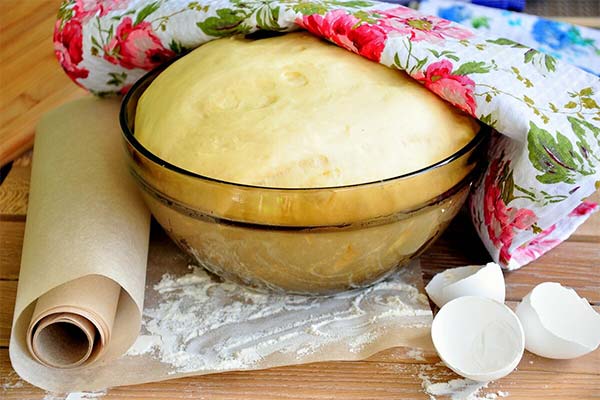
- Defrost the dough slowly, let it warm up well and rise. You can also do this with a special function in the microwave, but the result will be worse.
- The dough from the freezer should first be transferred to the refrigerator. When it is completely defrosted, you can leave it to warm and rise in the room.
- You can also defrost dough from the freezer immediately at room temperature. But this way the condensation that forms will give too much moisture. Then it is better to put the product on a well absorbent surface.
Again, it is worth recalling that defrosted dough should not be frozen a second time. It should be used completely.
How much yeast dough is stored at room temperature
Indoors, ready, fully seasoned, yeast dough is stored for no more than 2 hours. After that, it begins to sour. Lactic acid bacteria develop in the product, which significantly spoil its taste and structure.
«Important: All information on this site is provided for informational purposes only. for informational purposes only. Consult a health care professional before applying any recommendations. health care professionals before applying any of the recommendations. Neither the editors nor the authors shall be liable for any possible harm caused by materials."

